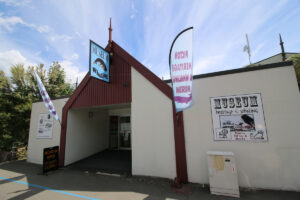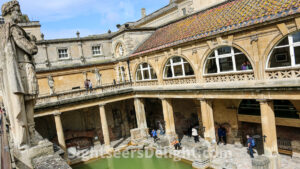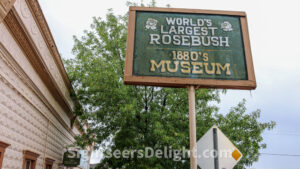The small, but packed Picton Heritage & Whaling Museum is home to more than 2,000 artifacts that help tell the area’s history, including its strong roots in the whaling industry. While the museum has been around for 60 years, its current home on London Quay was built in 1990 on the site of Waitohi Pa.
The Pima Air & Space Museum is one of the world’s largest aerospace museums. The museum, established in 1976, is home to roughly 300 aircraft and more than 125,000 artifacts displayed outdoors and in five hangars across more than 80 acres. Its collection includes an SR-71A Blackbird, an A-10 Warthog, a Boeing B-29 Superfortress and President Kennedy’s Air Force One. The museum, situated adjacent to Davis-Monthan Air Force Base, is the country’s third largest aviation museum and the largest privately funded aviation and aerospace museum in the world. The museum is also home to the Arizona Aviation Hall of Fame.
85706
Quake City tackles the devastating earthquakes that struck Christchurch, their impact on the city and how the city has worked to rebuild and reinvent itself. The museum first opened as part of the Re:START container mall in February 2013 and moved to its current location in June 2017. Quake City offers a compelling and in-depth look at the earthquakes, both from a scientific standpoint and a cultural one.
There is a lot that can be said about Richard Nixon. Though he is perhaps best known as the only president ever to resign from office, the 37th president of the United States is a complex person whose fingerprints can be found in so many aspects of 20th-century politics. The Richard Nixon Presidential Library and Museum first opened in July 1990. An updated iteration of the museum, complete with updated exhibits (including one on Watergate, which led to his resignation in August 1974), opened in October 2016. In addition to exhibits, the museum also includes the house where Nixon was born in 1913 and the VH-3A Sea King helicopter Nixon used when he departed from the White House for the last time as president.
92886
Riverside Museum in Glasgow, Scotland, showcases Glasgow’s rich transportation and technology collections. This museum boasts a collection of more than 3,000 objects highlighting the city’s contributions to heavy industries like shipbuilding, train manufacturing, and engineering. Architect Dame Zaha Hadid designed the museum, located where the Rivers Kelvin and Clyde meet and was designed by the talented a. After a four-year build, the museum opened its doors in 2011 and has since been a popular destination for locals and tourists alike.
The Rock and Roll Hall of Fame, established in 1983, was dedicated in Cleveland, Ohio, on September 1, 1995. The museum documents the history of rock and roll, not just those who have been inducted into the Hall of Fame. Inductees are honored in an exhibit located in a wing that extends out over Lake Erie.
44114
The Roman Baths, for which this southwestern England city is named, are some of the most remarkable Roman ruins outside of Rome itself. The area’s natural hot springs were used long before the Romans under Emperor Claudius invaded Britain, starting in 43 AD. Archaeological evidence shows human activity around the springs dating to 8,000 BC, though the area may have been too hot and swampy for a permanent settlement. Today, the Roman ruins stand at the center of this historic city. Much like their counterparts in Rome itself, the bath ruins provide a marvelous insight into both the magnificence of the buildings constructed by the Romans and daily life during Roman times.
The Rose Tree Museum opened in 1964 inside a former hotel in downtown Tombstone. The museum showcases a different side of history in the mining town, one that doesn’t include a famous gunfight. But the real highlight is the World’s Largest Rose Bush. According to various sources, Mary Gee, a homesick woman from Scotland, planted the Lady Banksia rose tree in 1885. By the 1930s, the bush claimed the title of world’s largest. The building itself was the first adobe structure built in Tombstone. The Visina Mining Co. built the structure as an employee lodging house. It was later the Cochise House and the Arcade Hotel before assuming the name of Rose Tree Inn in 1935.
85635
Route 66 Historical Village is an open-air museum highlighting Tulsa’s oil, refining and transportation history. The Visitor’s Center replicates a 1920s Phillips 66 gas station, and the museum is also home to the tallest oil derrick in North America, a Pullman passenger car commissioned in 1929 and Frisco 4500, a 4-8-4 steam engine that pulled the the St. Louis-San Francisco Railway’s Meteor passenger train. In 1901, oil was discovered on former Creek land, which led to Tulsa becoming known as the “Oil Capital of the World,” and the derrick sits on the southeast corner of the Sue Bland No. 1 oil lease. The Route 66 Village was created as part of a partnership called Vision 2025, which, in part, aims to rebuild the Historic Route 66 Highway, through Tulsa County.
74107









